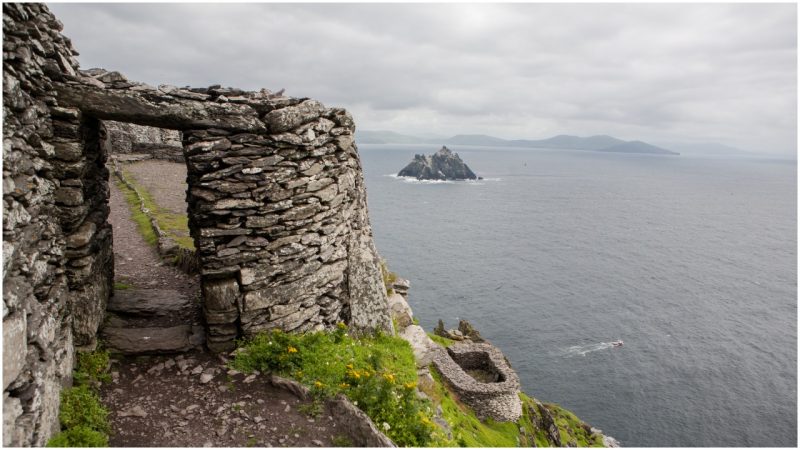If you’ve seen the latest installment of the Star Wars saga, The Last Jedi, then you were probably intrigued by Luke Skywalker’s hideout on the fictional Ahch-To planet. The rocky island covered in green grass, located in the middle of what looks like an ocean, has attracted much attention since the film was released worldwide in December 2017.
Even though the secluded island looks almost surreal, it isn’t a computer-generated trick, nor is it a well-disguised piece of set design. It is actually the island of Skellig Michael, just off the southern coast of Ireland.
Skellig Michael Island is home to some rare bird species like puffins, Manx shearwaters, and storm-petrels, but no humans have inhabited the rock since 1996, when a population report noted four persons residing on it.
The island proved to be a perfect pick for the Star Wars film crew, as it indeed illustrated the desolation that Luke Skywalker chose after his self-inflicted exile.
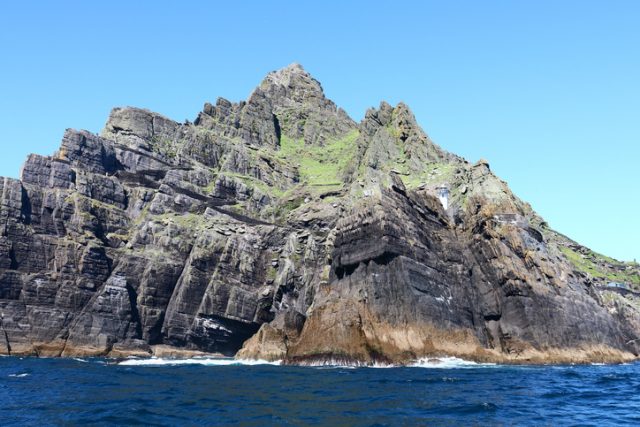
But the story of this island goes much further than its appearance in the film. In fact, Skellig Michael was home to an early Christian monastery community founded at some point between the 6th and 8th centuries. Even though the first official mention of the monastery dates from the 8th century, Saint Fionan, the father of Irish monasticism, is claimed to be the real founder. In case this claim is true, the monastery originates from the 6th century.
Dedicated to Saint Michael, the monastery consists of six traditional beehive structures called clochan, which are typical of the Irish southwest. Clochan are dry-stone huts used for shelter, or in this case for religious purposes. The origin of these buildings is most probably Celtic, but the design was common in the past, as similar huts can be found in service as tombs all across Europe and even the Middle East and Somalia.
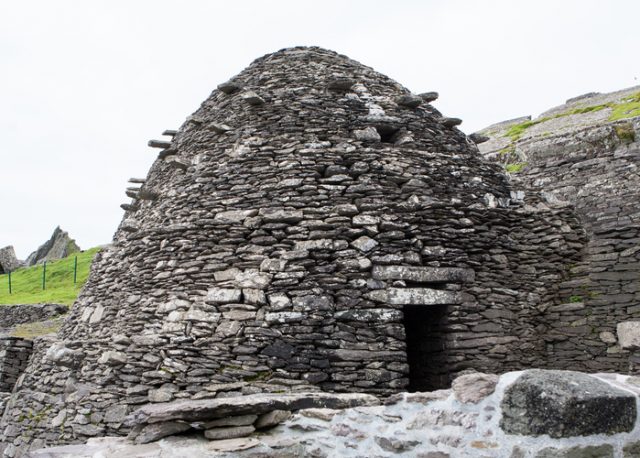
The clochan beehive huts use a well-known system of masonry, in which stones are placed in circular (or square) order, supporting each other all the way to a dome-like roof. Pretty sturdy, stable, and obviously strong enough to stand the test of time.
For the purposes of filming, exact replicas of these buildings were made, for the Skellig Michael huts are protected as a UNESCO World Heritage Site since 1996.
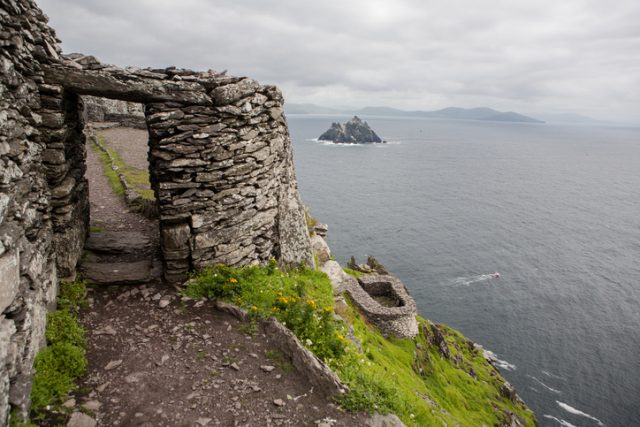
In addition to the beehive structures, the island includes large steps made of stone, which have their role in the film, as well as a medieval church which was built after the original huts. Stone slabs and crosses are scattered all over the island and concentrated in the area designated as the monastery’s graveyard.
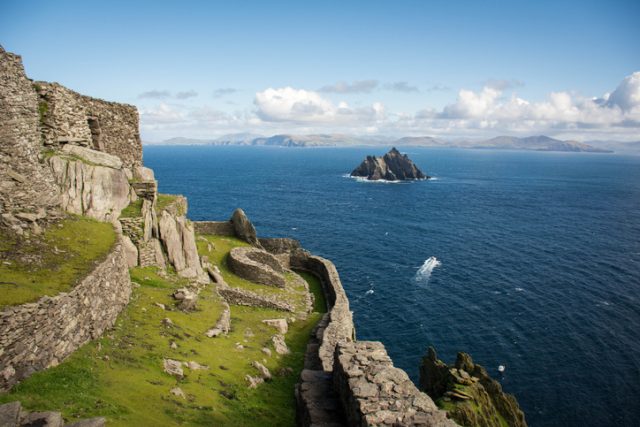
Even though there is little record of the history of the island and its Christian heritage, notes of a Viking raid in the year 823 reached the Annals of Inisfallen, one of the most prolific chronicles of medieval Ireland.
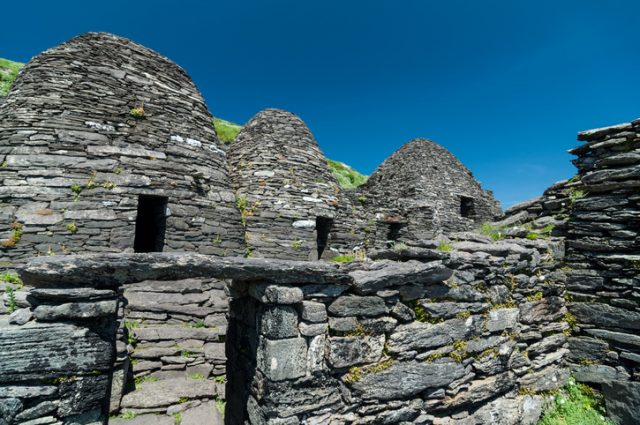
In the film, the island is home to an ancient Jedi Temple, curated by alien creatures dressed as nuns, who are simply called the Caretakers. The reference is clear. Just as the early Christian community of Skellig Michael was home to never more than 12 monks, the ancient Jedi Temple has its own religious community.
Related story from us: The Royal Palace of Caserta has featured twice in the Star Wars movie series
The endangered puffins that inhabit the island became the inspiration for the much-loved Porg creatures who represent the fauna of the Ahch-To sanctuary. The water planet on which the Jedi Order was founded was suitably fitted into an early-Christian narrative by the creators of the latest Star Wars film, proving once again how science fiction interacts with history and reflects the present.
